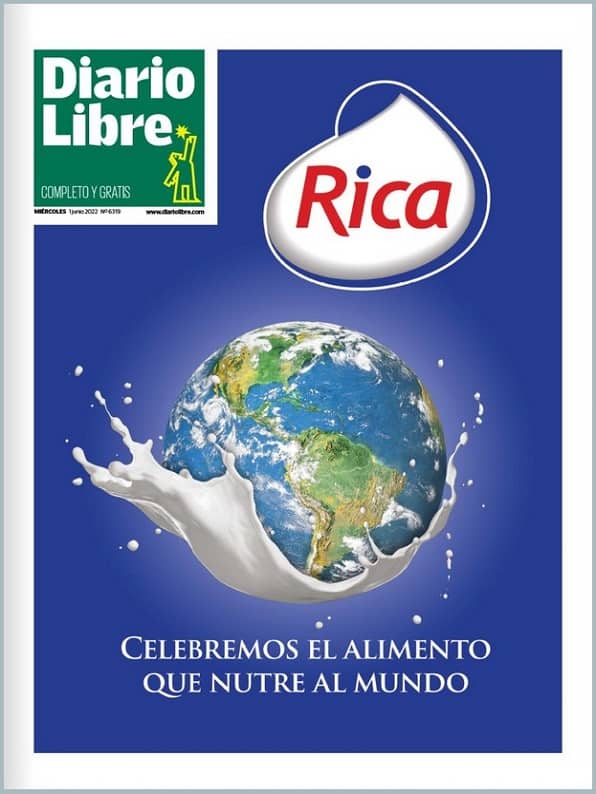The environment that the men destroy
Some 89% of the 2420 Haitian households established illegally on the frontier cook with wood or charcoal
The project Libon Verde is trying to restore the forest cover in the bi-national sub-basin of the Libon River
SD. In different points of the hills and mountains along the Dominican - Haitian frontier it is common to see columns of smoke. They are the signs of slash and burn farming and the cross-frontier commerce of uncontrolled charcoal. The drought and the deforestation pressure the rivers, such as the Masacre, whose depth does not reach the knees of the women that come together to wash in the frontier town of Dajabon.
The clearing of forest land on the frontier is the result of agreements between Dominican property owners and Haitian workers, for the production of charcoal or the cultivation of the land through sharecropping. The land, now spent, is abandoned temporarily, until it once again has some use.
The report "Haiti - Dominican Republic, environmental challenges in the frontier area," published in 2013 by the United Nations Environmental Program (UNEP), indicates that the slash and burn agriculture resulted in a record of 45 forest fires in 2011 and 32 during the first four months of 2012, just in the province of Elias Piña.
The areas most affected by the fires are the Central Mountain Chain, the Sierra de Bahoruco, and the nearby protected areas, during the dry season.
At the beginning of May of the present year, the pine forests of Zapoten and Loma El Toro both in the Sierra de Bahoruco, where damaged by forest fires, reaching species of pine and other endemic plants.
At the same time, Loma de Cabrera, Partido, Restauracion and the municipality of Santiago de la Cruz, in Dajabon, also lost forest cover through fires. The Ministry of the Environment estimated the number of tareas affected at about 6000. They reported the arrest of several persons indicated as those responsible for these and other fires.
Juan Manuel Cordero, the President of the Ecological Society of Dajabon, attributed the burning to people that are trying to do business with the resin-rich center of the pine trees, or to burn charcoal or sell wood.
Charcoal: a headache
Friday morning 15 April, six ovens to make charcoal from neem trees were burning in Anse-a-Pitre, close to the mouth of the Pedernales River. There were no people in the area. Personnel from the Specialized Corps of Frontier Security (Cesfront) explained that the wood is cut on the Dominican side, in Pedernales, and they take it slowly at night to the Haitian territory where the Army (Dominican) doesn't have jurisdiction.
Approximately 75% of the population of Haiti uses charcoal to cook, principally in the capital of Port-au-Prince. A part of this material is produced illegally on the Dominican side of the frontier, and the report by the UNEP estimates that the amount generated in the country for consumption in the neighboring country is some 50,000 tons per year, constituting a business valued at US $300 per ton.
The surroundings of lakes Azuei and Enriquillo, like Boca de Cochon, Las Lajas Tierra Nueva, Puerto Escondido, and Bahoruco are the geographic points where they make ovens for this activity. From the Azuei they transport the product in boats to Haiti.
The use of firewood contributes to deforestation. A study finalized in 2013 by the Specialized Corps of Frontier Security (Cesfront), show that 98% of the 2420 Haitian families are living illegally in the 15 km border strip which corresponds to the Dominican Republic, in the five provinces which border on Haiti. Some 89% of the households cook with firewood or charcoal.
Reduced water resources
In the frontier area, the wells and village faucets, trucks that sell water wholesale and the dry riverbeds reveal the scarcity of water. The UNEP stresses that Elias Piña is experiencing a reduction of rainfall and a lack of river water, which contributes, in part, to the emigration of Dominicans.
The rivers are affected by the solid refuse which the populations discard on the riverbanks, where, in addition, the rivers are also used to wash themselves and their persons and for their physiological needs as well.
The hydraulic resources of the region are composed of the Dajabon (Masacre), Artibonito-Macasias, and Pedernales rivers; the mouth of the North Yaque River(the nation's largest river), and the watersheds of Maguaca-Chaquey and of Las Barias. There are also the Montecristi Maritime Park, Lake Enriquillo, Jaragua and Sierra de Bahoruco, El Morro and the Wildlife Reserve on Seven Brothers Keys, all national parks.
Haitian women are used to washing in the Masacre. On frontier market days in Dajabon, they are seen in groups sitting on the sand. They put their sheets and clothes out to dry on the dry riverbed.
The scarcity of water is attributed to the degradation of the land, which causes less retention of the rainfall, and the reduction of the rains.
The UNEP has issued an alert that the contaminants that flow from the frontier area into the Atlantic Ocean damage the reproductive capacity of the crustaceans and fish, reducing the supply of shellfish for the island.
Reforestation programs
The UNEP stresses that in 2013, the forest area of the Dominican Republic was estimated at approximately 40% of the territorial surface, in comparison with 12% in the 1980s. Although the coverage has been growing since then as a result of reforestation plans, on the frontier region it has been much slower.
One of the projects to repair the damage is "Frontera Verde" (Green Frontier), initiated in 2010 with 40 bi-national reforestation brigades along all of the frontier. Heads of families, from both sides of the island, worked to rescue their territories during periods of work where they were paid US$8 per day.
The International Highway, which is the demarcation line of the frontier between Restauracion and Pedro Santana, is a "highway" that is mostly deforested. But in Restauracion there is a green oasis of pine trees that contrasts with a desert-like environment that exists on the side which corresponds to Haiti.
In the communities around the sub-basin of the Libon River, which is part of the watershed of the Artibonito River, since 2011 they have been implementing the Libon Verde Project. Its aim is to restore the forest cover in the area of influence of this river on both sides of the frontier.
The beneficiaries are the people of Restauracion and the Haitian communities of Carice,Mont Organicé and Lamielle.
The project is carried out by the ministries of the Environment of Haiti and the Dominican Republic, with the support of the German Agency for Technical Cooperation. They contemplate, in addition the creation of green jobs.
The project Libon Verde is trying to restore the forest cover in the bi-national sub-basin of the Libon River
SD. In different points of the hills and mountains along the Dominican - Haitian frontier it is common to see columns of smoke. They are the signs of slash and burn farming and the cross-frontier commerce of uncontrolled charcoal. The drought and the deforestation pressure the rivers, such as the Masacre, whose depth does not reach the knees of the women that come together to wash in the frontier town of Dajabon.
The clearing of forest land on the frontier is the result of agreements between Dominican property owners and Haitian workers, for the production of charcoal or the cultivation of the land through sharecropping. The land, now spent, is abandoned temporarily, until it once again has some use.
The report "Haiti - Dominican Republic, environmental challenges in the frontier area," published in 2013 by the United Nations Environmental Program (UNEP), indicates that the slash and burn agriculture resulted in a record of 45 forest fires in 2011 and 32 during the first four months of 2012, just in the province of Elias Piña.
The areas most affected by the fires are the Central Mountain Chain, the Sierra de Bahoruco, and the nearby protected areas, during the dry season.
At the beginning of May of the present year, the pine forests of Zapoten and Loma El Toro both in the Sierra de Bahoruco, where damaged by forest fires, reaching species of pine and other endemic plants.
At the same time, Loma de Cabrera, Partido, Restauracion and the municipality of Santiago de la Cruz, in Dajabon, also lost forest cover through fires. The Ministry of the Environment estimated the number of tareas affected at about 6000. They reported the arrest of several persons indicated as those responsible for these and other fires.
Juan Manuel Cordero, the President of the Ecological Society of Dajabon, attributed the burning to people that are trying to do business with the resin-rich center of the pine trees, or to burn charcoal or sell wood.
Charcoal: a headache
Friday morning 15 April, six ovens to make charcoal from neem trees were burning in Anse-a-Pitre, close to the mouth of the Pedernales River. There were no people in the area. Personnel from the Specialized Corps of Frontier Security (Cesfront) explained that the wood is cut on the Dominican side, in Pedernales, and they take it slowly at night to the Haitian territory where the Army (Dominican) doesn't have jurisdiction.
Approximately 75% of the population of Haiti uses charcoal to cook, principally in the capital of Port-au-Prince. A part of this material is produced illegally on the Dominican side of the frontier, and the report by the UNEP estimates that the amount generated in the country for consumption in the neighboring country is some 50,000 tons per year, constituting a business valued at US $300 per ton.
The surroundings of lakes Azuei and Enriquillo, like Boca de Cochon, Las Lajas Tierra Nueva, Puerto Escondido, and Bahoruco are the geographic points where they make ovens for this activity. From the Azuei they transport the product in boats to Haiti.
The use of firewood contributes to deforestation. A study finalized in 2013 by the Specialized Corps of Frontier Security (Cesfront), show that 98% of the 2420 Haitian families are living illegally in the 15 km border strip which corresponds to the Dominican Republic, in the five provinces which border on Haiti. Some 89% of the households cook with firewood or charcoal.
Reduced water resources
In the frontier area, the wells and village faucets, trucks that sell water wholesale and the dry riverbeds reveal the scarcity of water. The UNEP stresses that Elias Piña is experiencing a reduction of rainfall and a lack of river water, which contributes, in part, to the emigration of Dominicans.
The rivers are affected by the solid refuse which the populations discard on the riverbanks, where, in addition, the rivers are also used to wash themselves and their persons and for their physiological needs as well.
The hydraulic resources of the region are composed of the Dajabon (Masacre), Artibonito-Macasias, and Pedernales rivers; the mouth of the North Yaque River(the nation's largest river), and the watersheds of Maguaca-Chaquey and of Las Barias. There are also the Montecristi Maritime Park, Lake Enriquillo, Jaragua and Sierra de Bahoruco, El Morro and the Wildlife Reserve on Seven Brothers Keys, all national parks.
Haitian women are used to washing in the Masacre. On frontier market days in Dajabon, they are seen in groups sitting on the sand. They put their sheets and clothes out to dry on the dry riverbed.
The scarcity of water is attributed to the degradation of the land, which causes less retention of the rainfall, and the reduction of the rains.
The UNEP has issued an alert that the contaminants that flow from the frontier area into the Atlantic Ocean damage the reproductive capacity of the crustaceans and fish, reducing the supply of shellfish for the island.
Reforestation programs
The UNEP stresses that in 2013, the forest area of the Dominican Republic was estimated at approximately 40% of the territorial surface, in comparison with 12% in the 1980s. Although the coverage has been growing since then as a result of reforestation plans, on the frontier region it has been much slower.
One of the projects to repair the damage is "Frontera Verde" (Green Frontier), initiated in 2010 with 40 bi-national reforestation brigades along all of the frontier. Heads of families, from both sides of the island, worked to rescue their territories during periods of work where they were paid US$8 per day.
The International Highway, which is the demarcation line of the frontier between Restauracion and Pedro Santana, is a "highway" that is mostly deforested. But in Restauracion there is a green oasis of pine trees that contrasts with a desert-like environment that exists on the side which corresponds to Haiti.
In the communities around the sub-basin of the Libon River, which is part of the watershed of the Artibonito River, since 2011 they have been implementing the Libon Verde Project. Its aim is to restore the forest cover in the area of influence of this river on both sides of the frontier.
The beneficiaries are the people of Restauracion and the Haitian communities of Carice,Mont Organicé and Lamielle.
The project is carried out by the ministries of the Environment of Haiti and the Dominican Republic, with the support of the German Agency for Technical Cooperation. They contemplate, in addition the creation of green jobs.


 Diario Libre
Diario Libre Diario Libre
Diario Libre